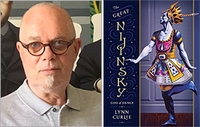This illuminating history of Washington, D.C., spotlights five of the city's most imposing structures: the U.S. Capitol, the White House, the Washington Monument, the Lincoln Memorial and the Jefferson Memorial. After explaining how George Washington selected the site of the new government seat, the author describes the original plan for the city, developed by engineer and architect Pierre-Charles L'Enfant, who "vowed to create a capital 'magnificent enough to grace a great nation.' " Unlike his Brooklyn Bridge
and Liberty, which focused on the development of one structure, Curlee here chronicles the planning and construction of all five landmarks, emphasizing the historical and architectural significance of each. He covers a lot of territory; some readers may wish he had dedicated the entire book to the most complex and captivating story (and the one to which he devotes the most pages): the Capitol. Curlee's paintings of the designs and buildings, especially the Capitol's dome, seemingly thrusting through the clouds, are as breathtaking as ever; the portraits of people, however, tend to be somewhat static or wooden. Budding historians will be most captivated by the tale of the Capitol's construction, its burning by the British during the War of 1812, its rebuilding and subsequent enlargements, as well as an ample sprinkling of trivia (e.g., Thomas Jefferson's anonymously submitted plans for the original "President's House" did not win its design competition; the Capitol served as a hospital during the Civil War; etc.). Curlee makes dramatic use of light in his spare, realistic acrylic paintings of this monumental architecture, readily conveying the buildings' splendor and grace. All ages. (Jan.)


